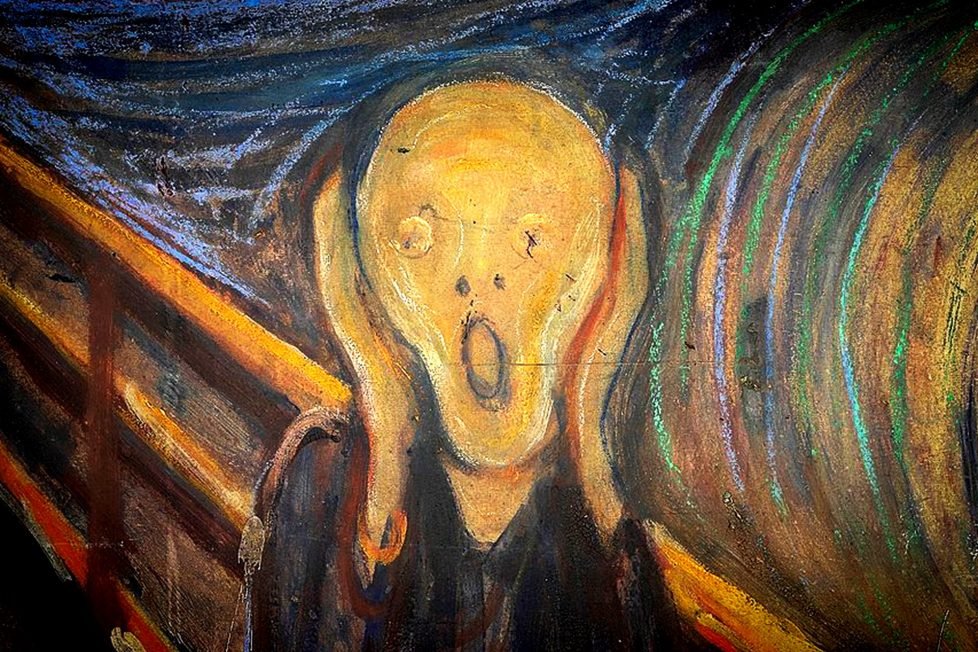9 of the Most Notorious Art Thefts in History
From mysterious disappearances to elaborate heists, the art world has been victim to many thefts in history.

From mysterious disappearances to elaborate heists, the art world has been victim to many thefts in history.

Table of Contents
ToggleThere is a dark side within the world of art, filled with black markets, avarice, and treachery. Museums, galleries, and private collections display timeless masterpieces worth many times their own weight in gold.
Yet, while our most reliable solid store of wealth has typically been buried deep within the vaults of financial institutions, our more aesthetic riches remain displayed openly on our walls, where people are welcome to come and gaze at their beauty.
Security has, at times, been weak, and this has served only to attract the dark side into our creative havens. Be it through audacious opportunity, or elaborate schemes, join us as we embark on a journey of the most infamous tales of art theft in history.
The Davidoff-Morini Stradivarius, crafted by Antonio Stradivari in 1727, is one of the most highly prized violins in the world, and one of only 650 that exist today.
The violin belonged to world-renowned violinist Erica Morini, and was purchased by her father for $10,000 in 1925.
70-years later, and after a fruitful career with her Stradivarius that led her to being named “the greatest woman violinist who ever lived”, Morini passed away in hospital. Just days earlier, her apartment was robbed of numerous precious possessions, among them her beloved violin. Morini was not informed of the theft before her death, and the violin has never been located.

Caravaggio’s “Nativity with St. Francis and St. Lawrence” is a beloved masterpiece of Baroque art, and its disappearance is one of the most mysterious cases in history. The painting lived in the Oratory of San Lorenzo in Palermo, Italy, and was stolen in 1969.
No clues as to the perpetrator or the location of the painting have ever been found, and the theft continues to be a great source of intrigue, with numerous theories having emerged over the decades.
Some believe it was stolen by the Sicilian Mafia, while others believe the theft was performed by amateurs. There are even rumors that the painting was destroyed in a barn fire, or crushed in the 1980 Irpinia earthquake. Whatever the story, the fascination with this robbery matches the fascination the art world has of the art piece itself, and its absence is a deeply regretted tragedy.

Edvard Munch’s “The Scream” is one of the most iconic works of art in the world, but it has also often been the target of thieves. In fact, the painting has been stolen twice, once in 1994, and again in 2004.
In the first case, thieves broke into the National Gallery in Oslo, Norway, and stole the painting in the middle of the night, leaving a note reading: “Thanks for the poor security.” Fortunately, the painting was recovered after three months, and the museum subsequently increased its security measures.
In the second case, the painting was stolen from the Munch Museum in Oslo, when two armed men took the painting through force. It was also recovered, albeit two years later, yet was regrettably damaged in the process.

Peter Carl Fabergé was a legendary jeweler from Russia who created some of the most opulent ornate objects in history. In particular, his House of Fabergé was responsible for the creations of 69 jeweled eggs, 50 of which were made for the Russian Tsars.
Following the Russian Revolution in 1917, a large number of these eggs were either confiscated or sold to private collectors, but some of them haven’t been seen since.
There have been many stories of new eggs being found over the past century, but six imperial eggs are still missing, likely totaling at least $250 million.
The most recent discovery occurred in 2014, when an American man unknowingly purchased it for $14,000 at an auction. His plan was to melt it down for scrap gold, but fortunately went to an appraiser first, who recognized its true identity. The egg later sold for $33 million at auction!

The works of Van Gogh have been a constant target for art thieves, with 28 paintings having been stolen and recovered in the Netherlands alone.
Most recently, in 2010, “Poppy Flowers”, valued at $55 million, went missing from the Mohamed Mahmoud Khalil Museum in Cairo. It had previously been stolen for a time in 1977, but this time it would not be recovered.
However, the biggest heist of Van Gogh’s works occurred in 1991, at the Van Gogh Museum in Amsterdam, when 20 paintings, including “The Potato Eaters” and “Sunflowers”, both worth $100 million each, were taken. Fortunately, the thieves didn’t get very far with their $500 million loot, as the paintings were recovered from an abandoned getaway vehicle shortly after.

On March 18th, 1990, the Isabella Stewart Gardner Museum in Boston fell victim to one of the most audacious art robberies of all time. Two individuals impersonating police officers managed to enter the premises on false pretenses, proceeding to tie up the museum guards and stealing 13 works of art valued at over $500 million.
Amongst the stolen artifacts were Vermeer’s “The Concert”, worth $250 million, and Rembrandt’s “The Storm on the Sea of Galilee”, worth $100 million.
An extensive investigation failed to recover the stolen paintings, and the thieves have never been found. Indeed, the museum continues to display empty frames in place of the missing artworks, as a reminder of the unsolved crime.

As I’m sure you are aware, the “Mona Lisa” is one of the most eminent paintings in the world, and its theft was proportionately famous. It was removed from its frame and smuggled out in 1911 from the Louvre, at the hand of an employee of the very same.
News of the heist spread rapidly after it was discovered the following morning, and a huge investigation was launched by the French police.
It was not until two years later that the painting was found, when the thief attempted to sell it to a gallery in Florence. It was returned to the Louvre, where it resides today, while the thief was returned to a prison.

Following the German invasion of Poland in 1939, during World War Two, an estimated 516,000 articles of art were stolen from museums and private collections by Nazi officials. This included paintings, sculptures, manuscripts, maps, and many other items of artistic and historic value. In addition, many millions of books were also destroyed or looted.
Among the stolen pieces were Raphael’s “Portrait of a Young Man”, worth $100 million, Rembrandt’s “Landscape with the Good Samaritan”, worth $36 million, and da Vinci’s “Lady with an Ermine”, worth $300 million.
Da Vinci’s piece was discovered by allied troops in Nazi leader Hans Frank’s country home shortly after the war, whereupon it was returned to the Czartoryski Museum in Kraków.
Rembrandt’s painting was discovered as a result of Polish historian Karol Estreicher’s investigations into the cultural losses of Poland, in 1944, and was also returned to the Czartoryski Museum.
However, Raphael’s piece has remained unfound, its empty frame now awaits in the National Museum of Krakow, hoping for its eventual return.

The Ghent Altarpiece is a large and complex polyptych by the Flemish painters Jan and Hubert van Eyck. You’ll be forgiven if that’s a new word for you – it was for me too – but a “polyptych” is a work of art most often found in Renaissance period churches and cathedrals that is formed of many individual paintings.
The painting is positively ancient, being completed long ago in 1432! It originally lived in Saint Bavo’s Cathedral in Ghent, Belgium, but has been moved many times since then. As this has long been one of the world’s most coveted pieces of art, seven of those times were through theft!
After the French Revolution, it was to be plundered permanently, being given a new home at the Louvre. That is, at least, until 1815 and the Battle of Waterloo, when the British saved the day and returned the paintings to Ghent.
During World War I, many of the panels were stolen again by the Germans, but they were returned after the war. And during World War II, Adolf Hitler personally ordered the seizure of the paintings, which was achieved as it was en route to the Vatican for safety. It was again returned after the war.
However, in 1934, “The Just Judges” and “Saint John the Baptist” panels were stolen by an unknown thief, though he did kindly return the latter as a gesture of goodwill. The former, sadly, has never been found. The altarpiece was one of the first oil paintings ever created, making it incredibly historically significant, so it truly cannot be given a price.

